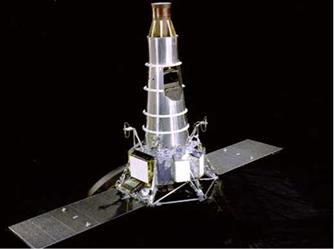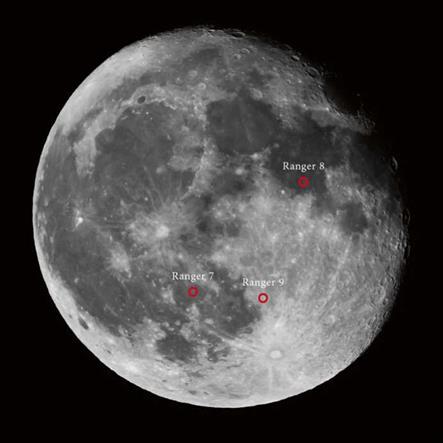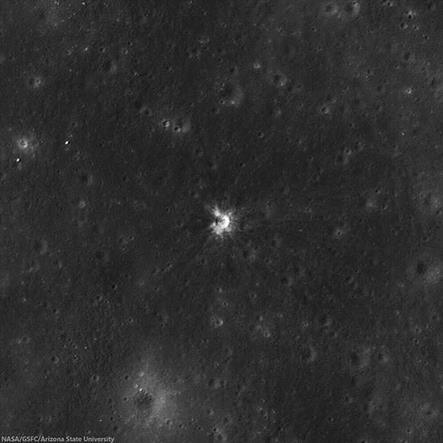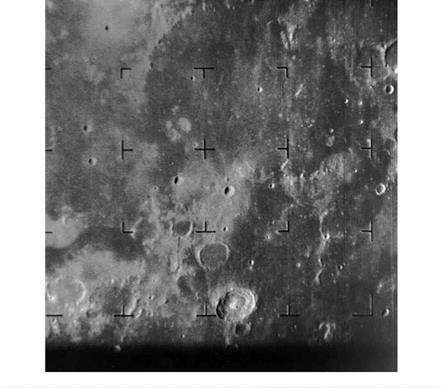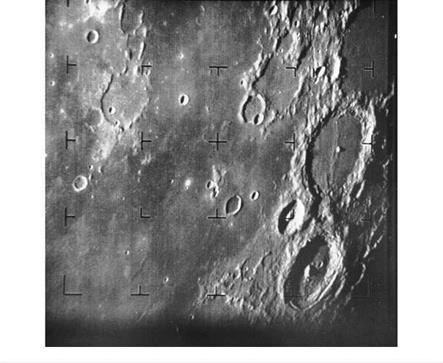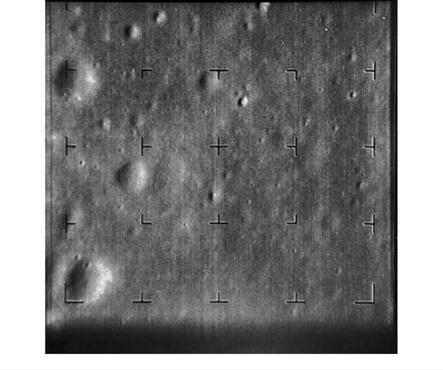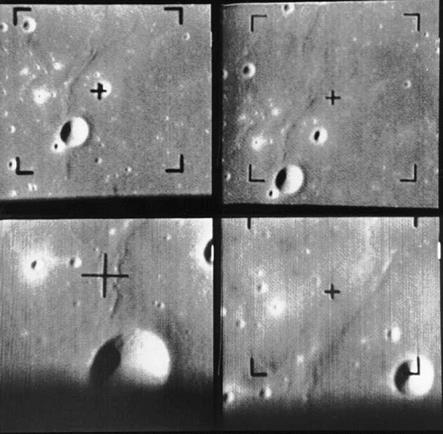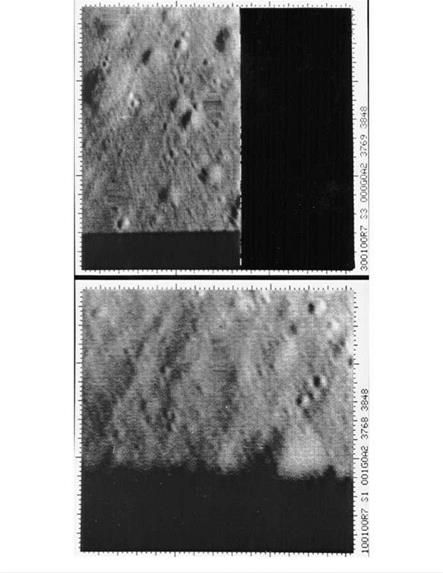The Moon is an easy and bright target for the beginning, casual, and serious backyard observer. Even with the unaided eye, one can identify the major Mares (or Seas) as the large and seemingly smooth grey areas. However, details of the Moon are difficult to discern with the unaided eye. The Moon is actually much smaller to the naked eye than the average person expects. Popular media and art often depict the Moon as a large celestial object taking up to as much as 20 or 30° of sky. Contrast this to the actual visual diameter of the Moon of a little over a half degree (31.4 arc-minutes). Still the Moon is an easy, large and bright target for a backyard astronomer to study.
With optical aids of either a good pair of binoculars or a good telescope, the Moon comes alive with details. A good pair of 7 x 35 or 7 x 50 binoculars can resolve some of the major craters and other major details on the Moon’s surface. The major mares, or seas can be identified.
But once the observer starts using a telescope the “OH WOW!” factor comes into play. Telescopes with apertures beginning at 60 mm and larger can produce very satisfying images of craters, mountain ranges, mares and lunar domes. And in the case of this book, a good telescope can help the reader to zoom-in on the Apollo landing sites and appreciate NASA’s great successes.
There are bookshelves full of books, and there are numerous websites on the Internet that offer advice in selecting telescopes, and telescope accessories. Many are well-written, thoughtful, and informative. Some are not. But most offer optical advice either from the well-heeled consumer with a money-is-no-object budget, or from the “best bang for the buck” viewpoint. What is often missing is the common sense approach for selecting the right telescope for the right use.
J. L. Chen, How to Find the Apollo Landing Sites,
The Patrick Moore Practical Astronomy Series, DOI 10.1007/978-3-319-06456-7_2, © Springer International Publishing Switzerland 2014
A useful analogy in buying a telescope is looking at a parking lot of a local grocery store. There are a variety of cars and trucks parked there. Why? Because different people purchase vehicles for different reasons. Soccer moms need mini-vans to haul their kids to soccer fields. Handymen need pickup trucks to haul plywood and plumbing tools. The thrill-seeker will own a high-performance sports car. And a business man will drive a prestige high priced car to show off wealth and fame.
The same process of selection also applies to telescopes. In this case, there are telescopes that are best used for deep sky objects such as nebulas, galaxies, and star clusters. There are telescopes that excel in astrophotography. And in the case of this book, there are telescopes that excel in observing the Moon and the planets of our solar system.
First-time buyers are faced with a myriad array of telescope choices, and more- often-than-not purchase the wrong telescope for their use. The wrong telescope purchase will end up in the closet gathering dust, or worst yet, in a garage sale. So here are a few basic all-encompassing guidelines in selecting telescopes for astronomy use, especially for viewing the Moon.
• Buy your second telescope first. The common advice for years from all amateur astronomers is don’t buy a department store telescope. In today’s world that advice extends to warehouse stores and sporting goods stores. Most so-called beginners’ telescopes are plagued with poor optics, shaky telescope mounts, and in some cases poor electronics. Many of these telescopes are aimed at well – intentioned consumers that haven’t taken the time to study the telescope market, and just want a big box under the Christmas tree or at the birthday party. Grandparents especially fall into this trap. By using the term second telescope, most telescope owners who survive the trials of these beginners’ telescopes and still want to pursue the hobby naturally learn to buy a quality telescope the second time around. Save money now by being educated and buy the right equipment first.
• A smaller telescope will get used more than a larger telescope. There is a strange ailment that afflicts every backyard astronomer known as aperture fever. In this bigger-is-better society, the desire for a larger telescope that shows more detail and gathers more light is sometimes overwhelming. But there is a point where a telescope becomes so large and cumbersome to use that the usage of said telescope becomes less and less. A smaller and more portable, telescope with easy setup gets used more.
• The telescope mount is as important as the telescope optics. A good, solid and stable telescope mount encourages observers to use their telescope. Nothing is more frustrating than trying to focus a telescope on a weak and poorly designed mount that shakes and vibrates with a slight touch or a slight breeze.
• The right eyepieces for the right job. As with telescope designs, certain eyepiece designs are suited for wide-angle extended celestial objects such as nebulas and open star clusters, while others are intended to high contrast detailed assignments. With the cost of eyepieces ranging from $30 to over $1,000 each, a meaningful and careful selection is appropriate.
• Buy the right telescope that suits your personal skills. Some telescopes are well – suited for the technically inclined. Some telescopes are simple to use. The potential first-time telescope owner needs to understand their own personal skills and acknowledge their abilities before making a telescope selection. Namely, if you can’t change a car tire, or your digital oven clock is always flashing 12 o’clock, certain astro equipment should avoided. And as with the size of the telescope, the easier the telescope is to use, the more likely it will be used.
• Consider a neutral density or polarizing filter for the telescope eyepiece. The Moon, especially when it’s full, can get uncomfortably bright. Not dangerously bright, like the Sun, just uncomfortable. An appropriate filter will tone down the glare to a comfortable level.
• Never point your telescope at the Sun unless properly equipped. This is important. Serious damage to the human eye occurs when viewing through an unfiltered telescope. Telescope vendors sell appropriate white-light and hydrogen-alpha filters for safe viewing of the Sun. The previously mentioned neutral density or polarizing filters for the Moon do not offer enough filtering protection for the human eye for solar observing.
• Buy quality. The old adage “You get what you pay for” applies here. Telescopic images are clear and sharp. Mounts work smoothly. Focusers have a buttery smoothness that allows for fine tuning of the focus. High quality telescopes allow the observer to enjoy astronomy without problems getting in the way. In fact, there are numerous examples of quality apochromatic refractors that have appreciated in value, and sell on the used market for more than the original purchase price.
• Support your local telescope store. Believe it or not, the astronomy industry is not a big money, high profit business. With the exception of two dominant major companies, many telescope businesses, either manufacturers or stores, are Mom and Pop operations run by people who love science and astronomy. They have expertise in amateur astronomy, provide quality products, provide personalized service, and are able to perform many repairs in their own shops. The smaller telescope shops struggle to compete with high volume Internet or mail-order firms who offer little or no service and rely on manufacturers to repair faulty equipment. Consumers need to understand the retail business. There are three criteria for competition: Quality, Service and Price. The consumer can only get two of the three. A lower price means the consumer sacrifices either service or quality. It is astounding to note that profit margins of major name brand telescopes are miniscule. For example, a well – known large Schmidt-Cassegrain computer controlled telescope costing over $3,000 will net a profit to a store of $100. Smaller stores rely on accessory sales, service work, and loyal customers to stay in business. Remember, at your local telescope store, there are real people (not a disembodied voice on the phone) who know astronomy, sell and support quality products, support local astronomy clubs, and can fix any problems with telescope equipment (often on the spot).











